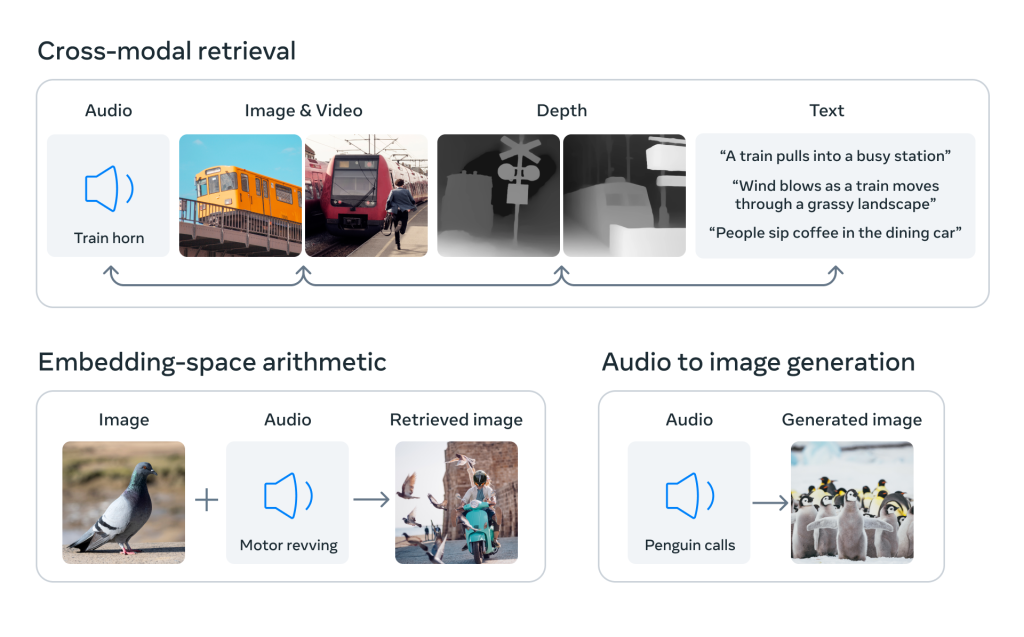In a groundbreaking development, Meta has unveiled ImageBind, an innovative AI model that bridges the gap between machines and humans in terms of holistic learning from multiple modalities. Unlike traditional AI systems that rely on specific embeddings for each modality, ImageBind creates a shared representation space, enabling machines to learn simultaneously from text, image/video, audio, depth, thermal, and inertial measurement units (IMU). This article explores the immense potential of ImageBind and its implications for the future of artificial intelligence.
ImageBind incorporates Multiple Sensory Inputs to Generate Media
ImageBind represents a significant leap forward in AI capabilities, transcending the limitations of previous specialist models trained on individual modalities. By incorporating multiple sensory inputs, ImageBind offers machines a comprehensive understanding that connects various aspects of information together. For instance, Meta’s Make-A-Scene can utilize ImageBind to generate images based on audio, enabling the creation of immersive experiences such as rainforests or bustling markets. Additionally, ImageBind opens doors for more accurate content recognition, moderation, and creative design, including seamless media generation and enhanced multimodal search functionalities.

As part of Meta’s broader efforts to develop multimodal AI systems, ImageBind lays the foundation for researchers to explore new frontiers. The model’s ability to combine 3D and IMU sensors could revolutionize the design and experience of immersive virtual worlds. Furthermore, ImageBind offers a rich avenue for exploring memories by enabling searches across various modalities, such as text, audio, images, and videos.
The creation of a joint embedding space for multiple modalities has long posed a challenge in AI research. ImageBind circumvents this issue by leveraging large-scale vision-language models and utilizing natural pairings with images. By aligning modalities that co-occur with images, ImageBind seamlessly connects diverse forms of data. The model demonstrates the potential to interpret content holistically, enabling various modalities to interact and establish meaningful connections without prior exposure to joint training.
ImageBind’s unique scaling behaviour reveals that its performance improves with larger vision models. Through self-supervised learning and utilizing minimal training examples, the model showcases new capabilities, such as associating audio and text or predicting depth from images. Moreover, ImageBind outperforms prior methods in audio and depth classification tasks, achieving remarkable accuracy gains and even surpassing specialized models trained solely on those modalities.
With ImageBind, Meta paves the way for machines to learn from diverse modalities, propelling AI into a new era of holistic understanding and multimodal analysis. The company has been making significant strides in the field of AI, with the company launching its own AI model some time back.
RELATED:
- Meta Rolls Out Paid Verification for Instagram & Facebook Users in the US
- Meta’s Ad System Goes Rogue, Overcharging Advertisers and Wasting Money on Ineffective Ads
- Best Samsung Phones 2023 – S23 Series, Foldables, A series & More
(Source)







